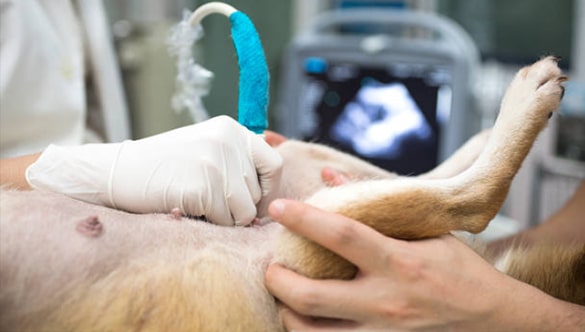Every dog parent treasures their fur-baby and wants to do the best they can to keep their pet safe and happy at all times. Unfortunately, we lack the power to control some natural problems, diseases included. Some of these illnesses are so severe that they are enough to make you cringe just by thinking about them.
Cancer is one of the ailment that has the potential of being so severe, which is why most people try to avoid thinking about it. Unfortunately, the disease leads when it comes to natural causes of death in dogs. Even worse, is that cancer comes in different types, with some being more deadly than others.
Mammary cancer is one of them, and simply learning that your dog has it can freak you out and get you wondering how much time you have left to be with your furry friend. Before answering that question, however, let’s first go through some of the most important things that you need to understand about the ailment.
Mammary cancer in canines
Mammary tumors originate from the mammary glands and are usually caused by the abnormal replication of cells that constitute breast tissues. Such tumors vary a lot and can either be small, less complicated nodules or large ones that are aggressive and metastatic. Mammary tumors in canines are commonly put into two categories, malignant (cancerous), and benign (non-cancerous).
The two categories are different from each other, and that is reflected in things such as diagnosis, treatment, and even management. Nonetheless, mammary cancer that may affect Fido is manageable since if detected early, the treatment has a higher chance of being successful.
When you learn that your pooch has mammary cancer, you might start wondering how much time is left for you to live with them. Before getting an answer to that, however, it would be good that you get to know some details about the disease, as discussed below.
What causes mammary cancer in dogs?
 Mammary cancer in canines does not have an exact cause, or rather, the cause is not fully understood. However, one of the main factors that lead to the condition is an increase in the female reproductive hormone – progesterone, which contributes to the development of malignant tumors.
Mammary cancer in canines does not have an exact cause, or rather, the cause is not fully understood. However, one of the main factors that lead to the condition is an increase in the female reproductive hormone – progesterone, which contributes to the development of malignant tumors.
One thing, however, that you might want to note is that the progesterone hormone does not directly encourage malignant tumors. It’s said to contribute to the disease because it promotes an increase in the number of cells that are susceptible to malignant transformation.
It’s also been found that benign growths can become malignant and as such, spaying the dog early enough is one of the best ways to deal with malignant tumors. This is because the procedure aims at reducing the number of cells that are highly susceptible to mutation and malignant transformation. The procedure, should, however, be carried out before the dog’s first heat period which is mostly at 6 months of age.
Risk factors
The following factors can put your dog at a higher risk of malignant mammary tumors:
1. Age
Age is one of the main factors that determine the probability of mammary cancer’s occurrence, with the risk increasing absurdly once Fido hits 7 years of age, and continues to do so until 11 to 13 years of age. The increased risk is also said to be dependent on the breed, which takes us to the next point.
2. Breed
This disease, like several others, seems to affect some breeds more than others, and these breeds include Dachshunds, Boxer Dogs, Brittany Spaniels, Chihuahuas, Doberman Pinchers, Poodles, Yorkshire Terriers, English Setters, and Cocker Spaniels. Even though research has been carried out for several years now, there is no breakthrough yet as to the connection between genes and mutation in dogs.
3. Gender
Just like in humans where females are at a higher risk of contracting breast cancer, so is it even in canines, where females, mostly the unspayed ones are more exposed to the disease. If your dog was, however, spayed at less than 2 years old, it’s highly unlikely that she will develop malignant tumors.
Though mammary cancer is more common in females, it can also affect males, in which case it becomes so aggressive and has a poor prognosis.
Symptoms of mammary cancer in canines
Several signs can indicate a possible case of mammary cancer in your dog, but keep in mind that it’s not always good to judge by such symptoms. The best thing to do is take Fido to a veterinarian so that diagnostic assessments can be carried out on them to determine whether or not they have the disease. Nevertheless, here are some symptoms you should look out for:
1. Lumps
One of the major signs of a mammary tumor in your dog is the presence of lumps in the mammary glands, near the dog’s rear. Palpating the dog’s teats can help detect mammary tumors in their early stages, which feel like tiny pebbles under the pooch’s skin. As the tumors grow, they might change their color to purple or red, and will either become hard or soft to the touch.
2. Pain
If a dog shows signs of pain when her mammary glands are touched, that might also be another significant symptom of mammary cancer. This sign can also be accompanied by other symptoms such as swelling of lymph nodes under your pooch’s armpits or groin, as well as unusual secretions from the nipples.
3. Additional symptoms
In cases where cancer has already spread, your pooch may show several other symptoms such as difficulty breathing, lameness, nausea, loss of appetite, vomiting, and loss of energy.
In addition to the above symptoms, you might want to know that tumors that are movable beneath the skin are usually benign, while the ones that seem to be fixed are in most cases malignant.
Life expectancy of a dog with mammary cancer?
Now that you’ve already equipped yourself with some basics about the disease let’s discuss life expectancy of a dog with mammary cancer. Well, several factors determine how long a dog suffering from mammary cancer can live with some being around for a few months while others live a full life. One interesting thing, however, is that the tumor numbers or location don’t seem to influence the survival rate.
Nonetheless, here are the most crucial factors that affect life expectancy of a dog with mammary cancer:
- Stage of cancer – The stage of cancer is determined by how advanced the tumor is in terms of growth and size. Mammary tumors that are detected at stage 1, for example, have the best prognosis in general, and the dog can easily survive since cancer at this stage is easily curable.
- Type of cancer – Carcinomas are the most common types of mammary cancers in dogs, with one of the most dangerous, known as Inflammatory Mammary Carcinoma (IMC), being recognized as having the worst prognosis, leaving the affected dog with an average of 25 days.
- Size of tumor – How big the tumor is, affects the life expectancy of dogs, with the ones that have smaller ones being at a better position to survive as compared to the ones with larger tumors.
- How the tumors affect the skin – Another major factor that determines how long your dog is likely to live is how the tumors affect their skin. Pooches who have cancer without ulceration over the skin have a better chance to live longer as compared to the ones with ulceration.
- Spread of the tumor – This one works just like in humans, so if your dog’s cancer has spread considerably to other body parts, he/she might not have better chances to survive compared to a dog whose cancer is detected early when it hasn’t spread.
- Duration of tumor – Tumors that are detected when it’s quite late might put your dog at a lower survival chance since they might have already had an opportunity to spread to other parts. That’s why it’s imperative that you always report any abnormalities to the vet as soon as you identify them.
- Dog’s age – The age of your dog also goes a long way in determining how their prognosis will be. Younger dogs have been, in several studies, been proved to have a better prognosis compared to older ones.
All the above-discussed factors have to be put into consideration when determining life expectancy. Whatever the case, always cherish every moment you spend with your ailing furry friend and create good memories that will reduce or eliminate any worries you have.
In conclusion
Mammary cancer in dogs is a serious issue that demands much seriousness as far as dealing with it is concerned. Spaying your dog before her first heat period is one of the best techniques to reduce the risk, in addition to preventing obesity in your dog and not feeding them on a high quantity of red meat.




My name is Anne Lamar I had a dog named Boo she died of Mammoth Cancer at the age of 13 she was a chi Poo she had the first one out and two more showed up but died after that is there a cute for that kind of cancer